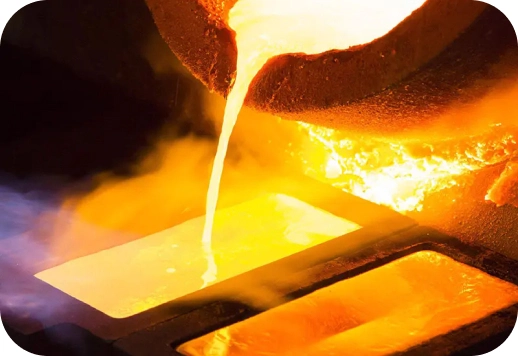The process of brass parts casting is one of the primary methods for producing metal parts, in which brass alloy is melted and poured into a suitable mold. This process, along with its advantages, also comes with challenges that we will discuss below.
Advantages:
1. Design Flexibility:
Using the casting process, brass parts with various complex designs can be produced. This process offers high flexibility in creating different shapes and dimensions of parts.
2. Surface Quality:
Brass parts produced by the casting process typically have a high-quality surface. This surface is smooth and free from significant lines and fractures, reducing the need for subsequent post-processing.
3. Lower Costs:
Compared to other production methods, casting can reduce the cost of producing brass parts. This is because it requires less use of complex machinery and skilled labor.
Challenges:
1. Mold Corrosion:
One of the main challenges in the brass parts casting process is mold corrosion. Molten brass can cause corrosion of the molds, leading to a decrease in the accuracy and quality of the final parts.
2. Corrosion and Porosity in Parts:
In some cases, corrosion and porosity may occur in the produced brass parts, leading to a reduction in their mechanical and chemical properties. Surface
3. Cracks and Corrosion:
During the casting process, surface cracks and corrosion may occur in brass parts, which can reduce the quality and strength of the parts.
Despite the challenges in the brass parts casting process, it remains an effective and widely used method for producing brass parts with suitable mechanical and chemical properties. This method is utilized in various industries such as electronics, automotive, and construction.

